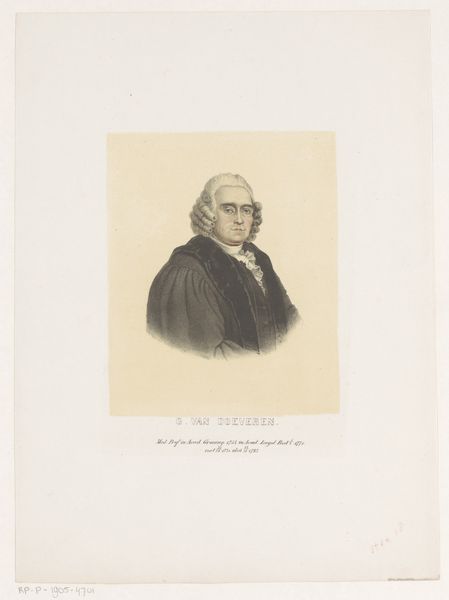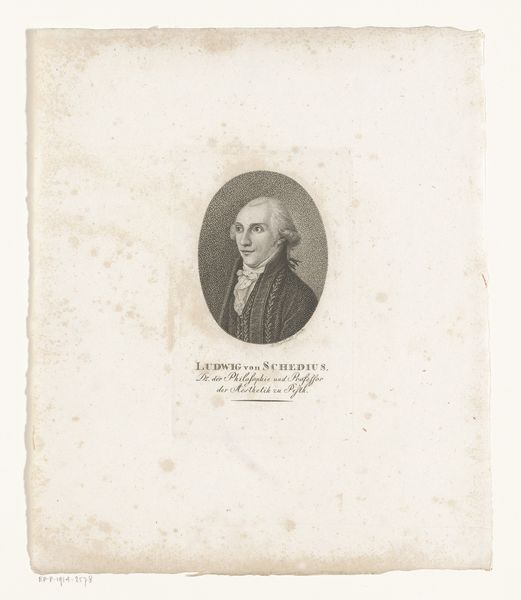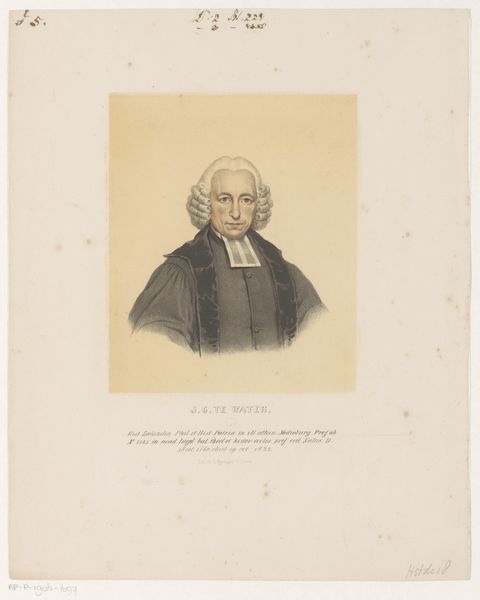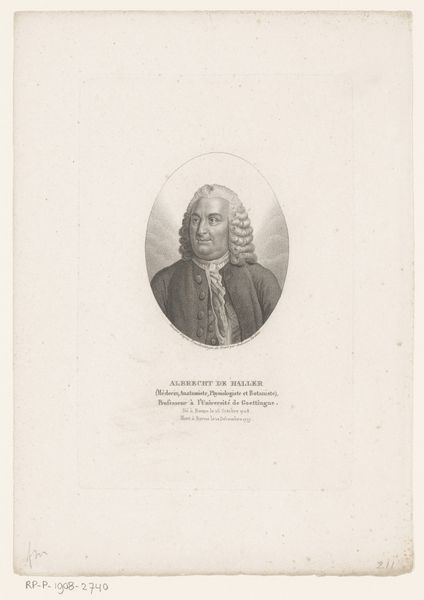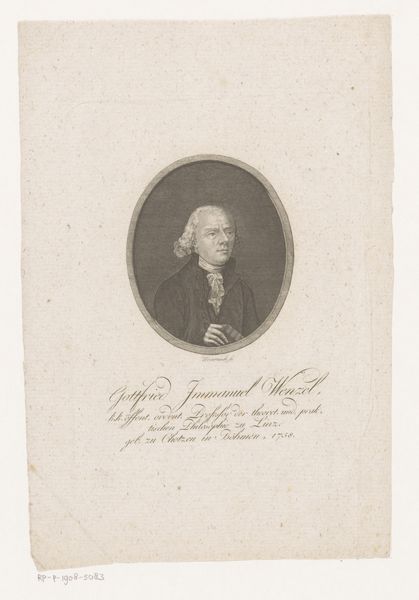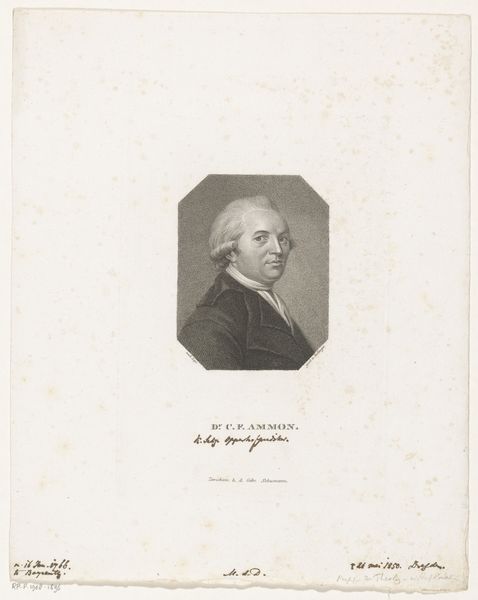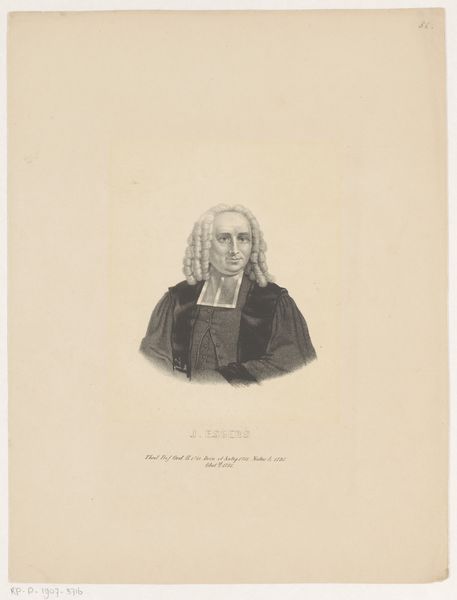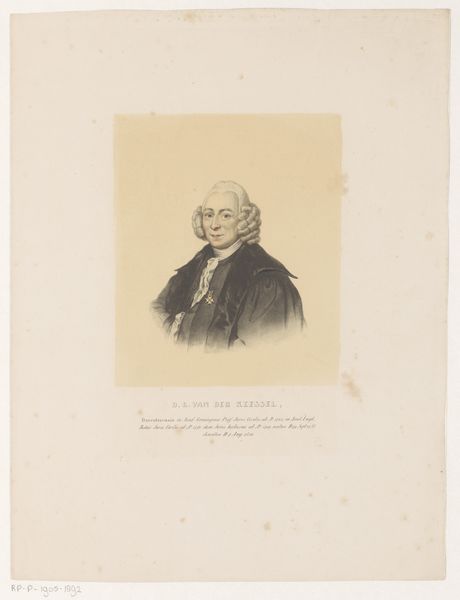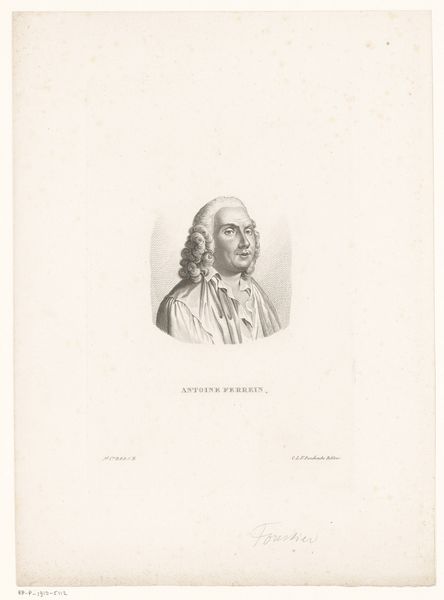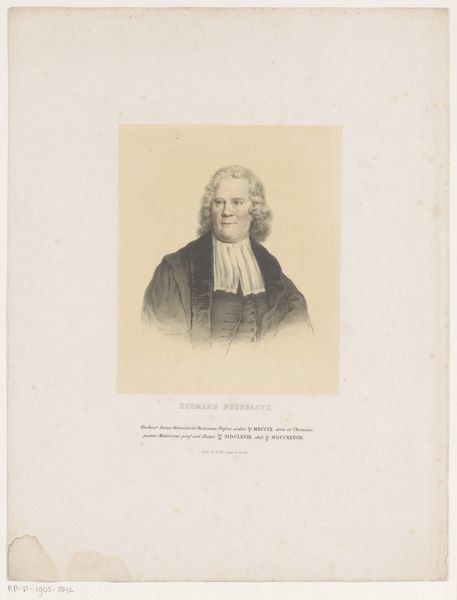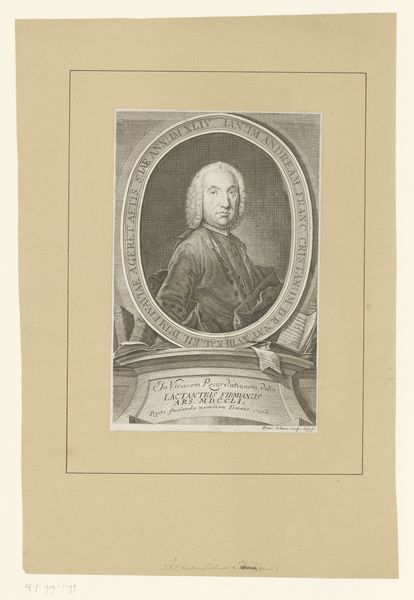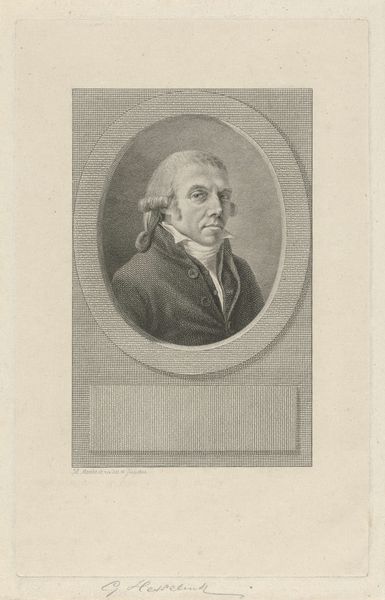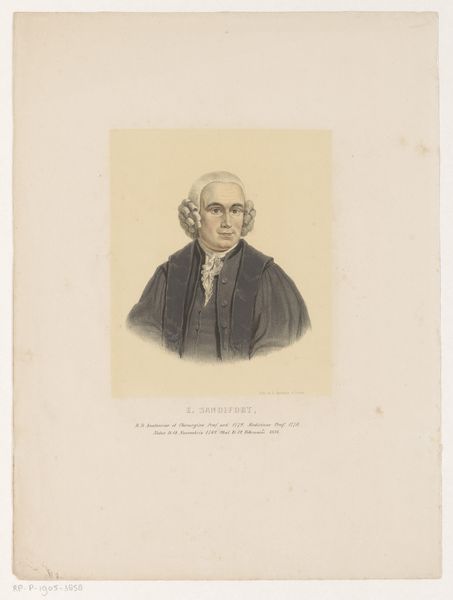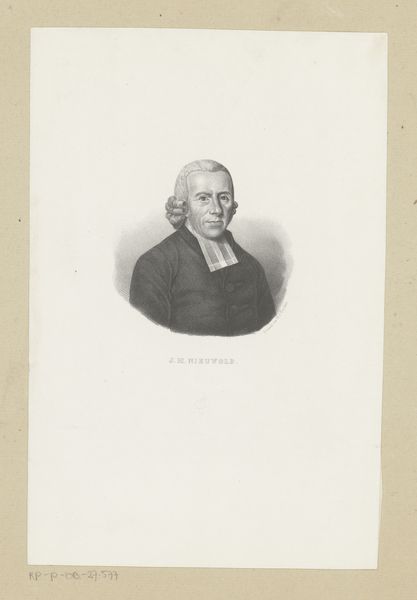
print, engraving
#
portrait
#
pencil drawn
#
neoclacissism
# print
#
pencil sketch
#
pencil drawing
#
history-painting
#
academic-art
#
engraving
Dimensions: height 332 mm, width 251 mm
Copyright: Rijks Museum: Open Domain
Editor: We're looking at "Portret van Dionysius van de Wijnpersse" by Leendert Springer, created around 1850. It appears to be an engraving or print. It’s quite a formal portrait. I am struck by the stark contrast between the subject and the blank space around him, focusing attention on his face and attire. What elements do you find most compelling in this print? Curator: Indeed, the formal arrangement of pictorial elements is critical. Consider the interplay of light and shadow across the face—how the engraver meticulously builds form through subtle gradations of tone. Observe the textures: the smooth, almost porcelain quality of the face, juxtaposed against the plush, delineated folds of the robe. It's a fascinating study in contrasts, wouldn’t you agree? Editor: I do! The details in the robe are really remarkable. Does this contrast have a deeper purpose, perhaps a semiotic function related to status or profession? Curator: Perhaps, but let's focus first on what is visually evident. The linear precision of the engraving technique lends itself to a certain coolness, an intellectual distance, if you will. Notice the limited tonal range, creating a restrained yet powerful visual statement. The structural clarity supersedes emotional expressiveness, which appears minimal. Editor: I see that now. There's a certain austerity in its composition. I initially missed that. Thank you, focusing on those intrinsic qualities has deepened my understanding. Curator: It is through the attentive study of form and materiality that we begin to decipher the deeper resonances of the artwork. By bracketing out the contextual factors, as we have just done, we’re forced to confront the pure aesthetic force of Springer's engraving.
Comments
No comments
Be the first to comment and join the conversation on the ultimate creative platform.
